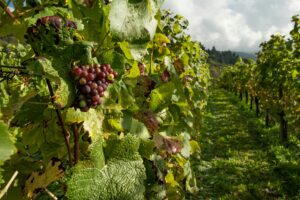We’re looking at the impact of global warming on the wine industry because it will eventually affect the new wines coming through.
Some wineries have had their crops decimated, some have had to move their vineyards to avoid extreme and devastating weather, and others have had to reduce the price of their wines and re-label due to ‘smoke taint’ in recent years.
There’s no escaping the fact that global warming is encroaching on our everyday lives and in all four corners of the globe.
Climate is so important in winemaking because it can impact the soil, the terroir, landscape and temperatures. These all determine the grape varieties that can be grown in that region and the quality and yield of the wine produced.
All manner of weather changes can impact the wellbeing of the grapevines, such as strong winds, heavy rain, hail and frost. While wine producers have developed innovative ways of handling natures challenges, global warming is an even bigger threat than anything that’s come before because it is extreme.
The climate crisis impacting vineyards and winemakers
Whether it’s floods, fires, frosts or pests, the vines need constant care and attention to produce a strong yield and a good quality wine. Vines are hardy and can grow in all manner of places, but to thrive, grapevines prefer a growing season of temperatures averaging 12-22°C (54-72°F), and global warming could gravely disrupt this.
Cool climates vs hot climate wines
Wines that like to grow in a cooler climate, such as Chardonnay and Pinto Gris, tend to have a lighter body with crisp acidity and a floral nose with tart fruit flavours.
Wines from a warmer climate such as Cabernet Sauvignon and Zinfandel produce bolder wines with higher sugar content leading to a softer acidity and berry fruit flavours.
Wine producers relocating vineyards due to global warming
Some winemakers have decided to relocate their vineyards to cooler climates to try and combat the rise in temperatures and the greater risk of fires. This has been the case in places like Australia and Spain, where they see an increasing number of fires every year.
Other winemakers are simply adapting the grape varieties they used to be more in line with the changing climate; however, this is probably not a long term sustainable plan and changes the profile of the wines either way.
In California, their main threat is the lack of water because rain is becoming scarce. The snowpacks on the mountain ranges are reducing at an alarming rate; these changes lead to arid land and an increased risk of wildfire.
The changes required to adapt will no doubt impact the wine industry for years to come; this will no doubt be a benefit to those who invest in fine wines and collect because the rarer bottles will become rarer relics still.







